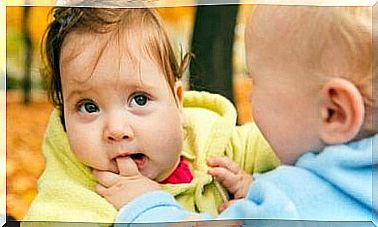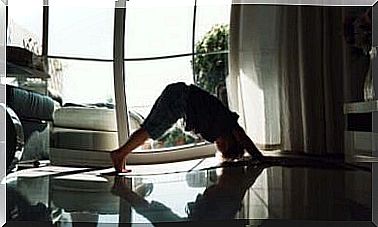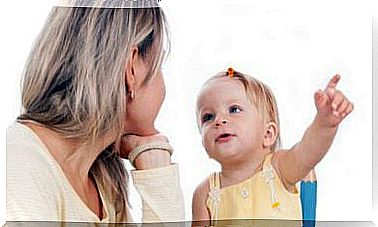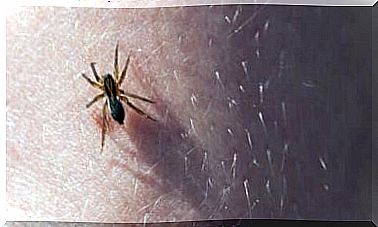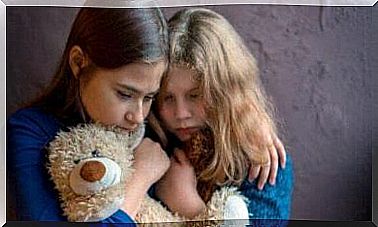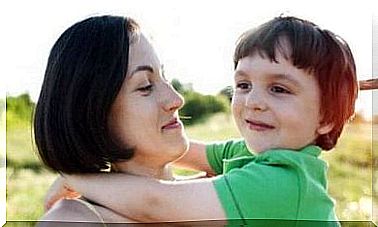The Strange Situation: Different Types Of Attachment
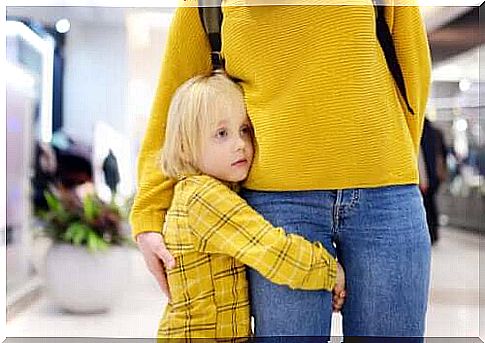
In 1970, American psychologist Mary Ainsworth conducted an experiment called The Strange Situation . It involved studying children interacting with their mother and with a strange adult in an unfamiliar context. In this article, we explain what the The Strange Situation experiment consisted of, as well as the different types of attachment that were observed.
The Strange Situation and the Different Types of Attachment
The Strange Situation was a study conducted by psychologist Mary Ainsworth in the 1970s. For her research, she selected several 12-month-old children and then studied each child’s individual behavior.
The experiment consisted of observing the child’s interaction with its mother and a stranger in an unfamiliar context and in the following situations:
- Mother and child stay in the same room. The child plays freely and explores the environment while the mother observes him.
- Shortly after, a stranger enters and the mother strikes up a conversation.
- The mother then leaves the room without the child noticing and the stranger continues to play with the child.
- The mother returns and tries to comfort him. The stranger leaves the room.
- A few minutes later , the mother leaves the room again and leaves the child alone.
- The stranger returns. This comforts the child, if necessary, and plays with the child.
- Finally, the mother returns.

In each of the different situations, Ainsworth observed and studied the following:
- The quality of the relationship between the child and the mother.
- The child’s reactions to the mother’s separation and reunion with her.
- The child’s reaction to the appearance of the stranger.
Another aspect that Ainsworth noted in The Strange Situation was that the children explored and played more in the presence of their mother. However, this behavior diminished when the stranger came in and especially when the mother left.
Types of attachment
In this experiment, Ainsworth found clear individual differences in children’s behavior. These differences allowed her to describe the behavioral patterns of the different attachment types:
Secure attachment
Secure attachment manifests in 65-70 percent of infants. Children with this type of attachment use their mother as a secure base to explore the environment. When the mother leaves or disappears, they show fear and anxiety.
In addition, the child’s exploratory behavior decreases. When the mother returns, the child easily calms down and seeks physical contact, then continues with its exploratory behavior.
The internal relationship model that the child builds when establishing a secure attachment is based on availability and affection. The characteristics of parents or caregivers that influence the development of secure attachment are:
- They respond to the demands and needs of the child and interpret them appropriately.
- They express frequent affection and attention.
Insecure-ambivalent attachment
This type of attachment occurs at a frequency of 10-15 percent of children. When the attachment figure is present, children show no interest in exploration and stay close to the mother for fear that she will disappear. When the mother disappears, the child shows fear. However, when she returns, their reaction is ambivalent.
In this case, the child’s internal relationship model will be based on the lack of security and protection. The behaviors that lead to the development of an insecure-ambivalent attachment are:
- Parents do not adequately interpret or meet the demands and needs of the child.
- They are inconsistent in their behavior towards the child.
Insecure-avoidant attachment
The frequency of insecure avoidance attachment occurs in 20 percent of children. In this type of attachment, children usually do not show fear when separated from the attachment figure. The child is quite independent and ignores the mother when she is present.
Most notably, when the mother reappears, they do not seek physical contact with her. Even when their mother seeks contact, they reject the approach.
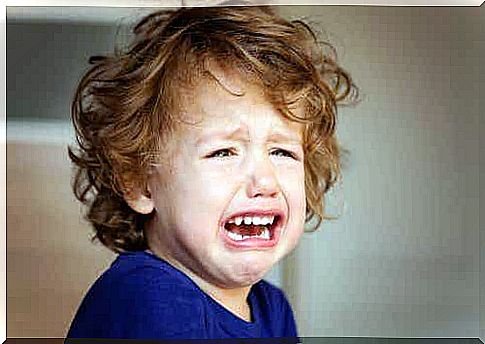
The internal relationship model that the child has with insecure-avoidant attachment is based on distance to avoid rejection. The behaviors of parents or caregivers that promote the formation of this type of attachment are the following:
- These caregivers are irresponsible and unable to provide the care and support that the child needs. They often reject their children.
- They maintain little contact with their children and the relationships are authoritarian and hostile.
- They do not express affection or feelings.
Insecure-Disorganized Attachment
This type of attachment is manifested in 10-12 percent of children. It combines ambivalent and avoidant attachment patterns. Children are insecure and disoriented when the mother is present. They approach her but avoid eye contact.
When separated, their behavior is confused and disorganized. When the mother comes back, they don’t know how to react; they show confusion about whether to approach or avoid her.
It has been observed that this type of attachment is common in children who have suffered abuse and neglect and who have experienced cyclical protection, rejection and aggression.
Children who develop insecure, disorganized attachments build an internal relationship model based on insecurity and lack of control. Characteristics of parents or caregivers that influence the development of secure attachment are:
- Negligent Behavior
- Personality Disorders
- Cyclic behavior of protection, rejection and aggression
